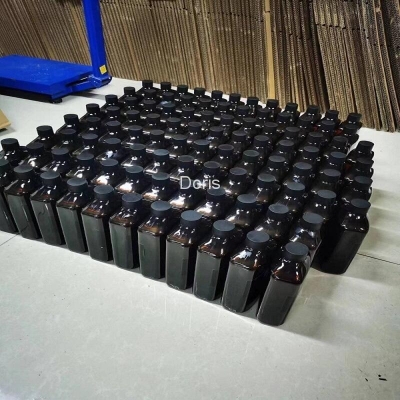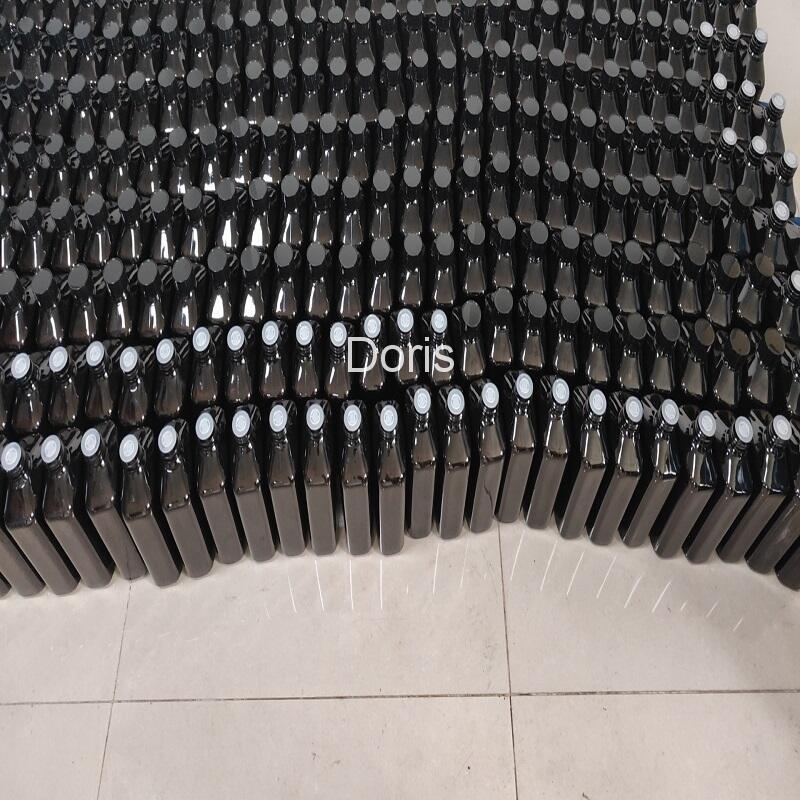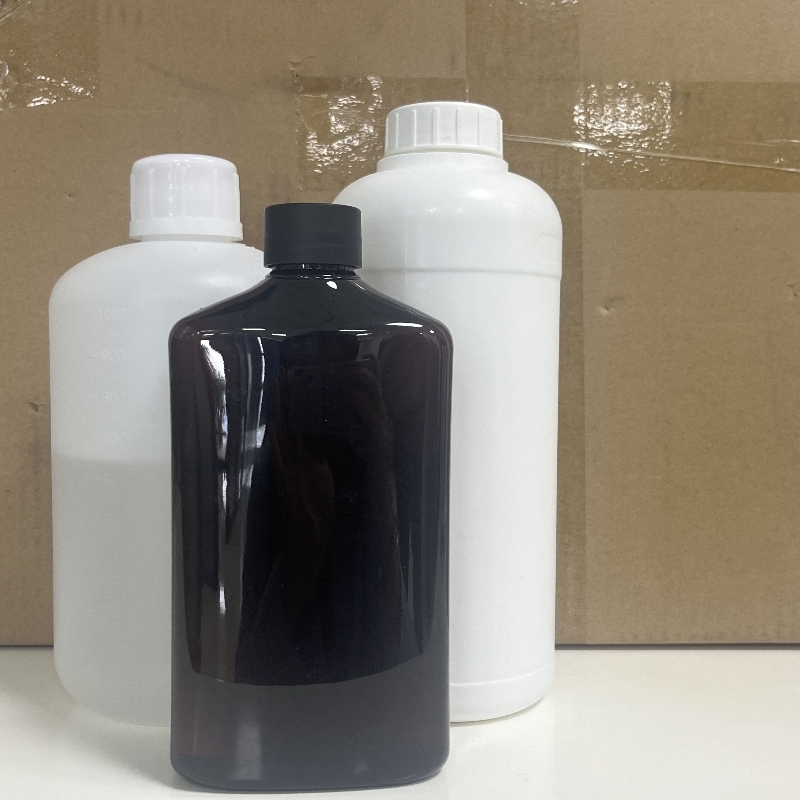-
Categories
-
Pharmaceutical Intermediates
-
Active Pharmaceutical Ingredients
-
Food Additives
- Industrial Coatings
- Agrochemicals
- Dyes and Pigments
- Surfactant
- Flavors and Fragrances
- Chemical Reagents
- Catalyst and Auxiliary
- Natural Products
- Inorganic Chemistry
-
Organic Chemistry
-
Biochemical Engineering
- Analytical Chemistry
- Cosmetic Ingredient
-
Pharmaceutical Intermediates
Promotion
ECHEMI Mall
Wholesale
Weekly Price
Exhibition
News
-
Trade Service
Heating wire tester Introduction Burning wire tester uses simulation technology to assess the fire risk of thermal stress effect caused by heat sources such as burning element or overload resistance in a short period of time, and is one of the series of products of electric electronic component fire risk test instrument.
for the evaluation of electrical equipment and its components and components, as well as solid electrical insulation or other solid flammable materials flammability tests and combustion temperature tests.
1.1 Test Principle 1, the use of simulation technology to assess the thermal components or overload resistance and other heat sources in a short period of time caused by thermal stress effects of the fire risk.
2, the hot wire is a prescribed resistance wire ring, heated by electricity to the specified temperature, is the top of the hot wire contact sample to reach a specified period of time, observation and measurement of the performance of the material.
3, this test device is used for flame-free ignition source fire test.
1.2 Test Standard This hot wire tester meets, but is not limited to, the following criteria: GB/T 5169.10-2006 (IEC 60695-2-10:2000);
1.3 Related terms Test temperature and the temperature of the burning wire: the top of the hot wire is heated and reaches a stable temperature before contact with the test sample;Ignition time: Ti, the duration from the application of the top of the burning wire to the laying of the base under the test sample or test sample;Fire-out time: Te, the duration from the application of the top of the burning wire to the extinguishment of the flame, during or after the extinguishment of nuclear energy by the flame;Flame height: The height of the flame after combustion, which is rounded up in 5mm.
but at the beginning of the ignition, a high flame may be generated at about 1s, which is not counted.
generation time: Te, long duration of flame and/or flameless combustion;Burning time: Tr, after removing the sample from the top of the burning wire, the long duration of the flame and/or flameless combustion of the sample was observed;Burning wire flammability index: Zui high temperature of the subject material measured by the burning wire flammability index test method: a) does not ignite the specified packaging cocoon, or if it ignites, extinguishes within 30s after removing the burning wire and does not burn it all; Paper burning wire ignition temperature: The zui high test temperature of the subject material measured by the burning wire combustion temperature test method is 25K (or 30K) higher than the zui high test temperature: a) does not ignite, or b) if the continuous and continuous combustion time of any one flame does not exceed 5s, and the sample is not fully burned.
1.4 instrument composition and use of exhaust fan: after the experiment through the exhaust fan, discharge polluted air.
regulator: the temperature of the hot wire is adjusted by adjusting the regulator knob to change the voltage at both ends of the supply of the hot wire.
a. Hot wire: labeled diameter: 4mm; material: nickel/chromium (80/20) wire; heating with a simple circuit, there should be no feedback device or feedback loop to keep the temperature.
typical current required to heat the top to 960 degrees C is between 120A and 150A.
b. Temperature measurement - wire thermocouples: primary mineral insulated metal armored wire thermocouples with insulated nodes.
should be 1.0mm or 0.5mm in diameter.
such as nickel chromium and nickel aluminum (K-type) wires are suitable for continuous operation at temperatures as high as 960 degrees C, and their welding points are located in armored sleeves as close to the top as possible.
armored sleeves should be made of metal and can withstand continuous operation at temperatures of at least 1050 degrees C.
the armored sleeve made of a nickel-based heat-resistant alloy is considered to meet the above requirements.
c. Load-mounted d?: adjustable mounting module for a wide range of standard and non-standard finished products.
d. Weight: 0.5N on one side, ensuring that the heating wire exerts pressure on the sample during the test is 1.0N.e. Two proximity switches: one for detecting the starting position of the car, which stops immediately when it is running.
a variable speed reminder that when the car passes through this position, it will slow down from 10mm/s-25mm/s to close to 0.
f. Stop: The stop is placed with a wire rod to promote the movement of the car and to stop the movement of the car.
opening at the bottom of the car allows for 7mm of space after insertion into the bezel.
When the hot wire touches the sample, the car is no longer pushed by the wire rod, and the car can continue to move as much as 7mm if the hot wire wears less sample under the weight of the weight.
g. To assess possible combustion spreads, such as those caused by burning or burning particles falling from the test sample, place a specified floor under the test sample.
Unless otherwise specified, wrap a layer of wrapping paper tightly on the upper surface of a smooth plank with a thickness of 10mm and place it under the hot wire applied to the test sample at a point of effect of 200 to 5mm.
paper is soft and strong lightweight packaging paper, unit area quality of 12g/m2-30g/m2.h. Flame height ruler: The flame height ruler is located directly behind the contact between the sample and the burning wire.
i. Box requirements: can observe the test sample status, volume of at least 0.5m2 test case.
of the test case ensures that oxygen loss during the test does not significantly affect the test results.
test samples are installed at least 100mm away from the surfaces of the test case.
2. Test 2.1 Sample preparation: When testing materials, injection molding, pressure molding or pressure molding is used to form the required shape.
if the above method is not available, the sample should be cut from a representative sample of the material.
, smooth the cut surfaces with fine sandpaper and carefully remove all dust and particles from the surface.
sample size should be at least 60mm long and 60mm wide (inside the fixture).
xx thickness values include: 0.1mm to 0.02mm, 0.2mm to 0.02mm, 0.4mm to 0.05mm, 0.75mm to 0.10mm, 1.5mm to 0.15mm, 3.0mm to 0. 2mm or 6.0mm to 0.4mm.
the test of the finished product, the sample should be a complete finished product if possible, and if the test cannot be carried out on the finished product, it may: a) cut a piece in the part that needs to be inspected;b) open a small hole in the complete finished product to make it come into contact with the hot wire;c) Remove the parts that need to be inspected from the complete finished product and test them separately.
2.2 Power Connect the device's power cable, power on, and turn on the device's power switch.
2.3 test settings Reference 3.4, the test number is carried out, the target temperature that needs to be tested is set, the hot wire is applied for time, and the speed of movement is set.
test number is in full numeric form, do not start with a number of 0, otherwise it will be automatically removed.
2.4 sample and attachment installation According to the sample size, adjust the screw distance to secure the sample to the sample car.
part of the sample plane is perpendicular and aligned with the hot wire direction.
test of the test material, the specified floor plank and packaging paper are placed under the sample, and the height of the laying bottom is 200mm to 5mm.
When the finished product test, if 1) the distance is equal to the actual distance of the sample installed in the electrical equipment when using the paving material representing the materials or components around the sample;
2.5 Position bracket adjustment Click the motor forward (right) button to move the sample forward until it is in contact with the hot wire.
the position of the positioning bracket so that the positioning bracket positioning sheet is engraved with the front section of the d-car positioning sheet.
the motor back button to return the vehicle to its initial position.
note that repeated adjustments are not required when testing is carried out continuously on samples of the same standard or size and the material is installed in the same manner.
When the sample thickness is large, observe whether the sample proximity position sensing switch can be sensed when the sample does not touch the burning wire, if not, it is necessary to adjust the sample contact position sensing switch, so that it can be sensed before contact with the sample.
2.6 test heating interface automatically displays the set sample number.
adjust the regulator knob to zero and click the heating button to start heating.
the "Heat" button, the heating circuit opens and the heating wirer is slowly heated by manually adjusting the regulator.
adjust the regulator knob step by step to observe the temperature display table reading, so that the temperature of the burning wire slowly rises, waiting for the hot wire temperature to reach and stabilize at the set temperature value.
: To extend the life of the burning wire and thermocouples, slowly increase the heating current.
the test the hot wire temperature stabilizes within the target temperature tolerance range of 60s after the instrument suggests that the test can be carried out.
click on the Start button to start the experiment.
(at which point the motor releases the travel and the car moves forward along the rails under the traction of weight gravity.)
when the sample is close to the starting limit switch of the hot wire, the speed of the sample car is quickly reduced to close, and the sample comes into contact with the hot wire.
at this time the gear sheet on the wire rod continues to move 7mm, the car power is only weight weight provided.
the sample starts to heat up and the interface shows the heating time.
) When the sample starts to burn, press the ignition timing button to record the ignition time.
flame goes out, press the ignition time button again and the timing stops.
waiting for the heating time to end at 30s, the carrier car will automatically return to the starting induction switch position.
data save Press the "Stop" button to automatically save the data and turn off the heating current.
the regulator to 0 and the hot wire stops heating.
the lighting and fan switches on.
if necessary, clean the hot wire while it cools down.
: It is important to clean the burning wire when cooling, to avoid burns when cleaning the hot wire, if the temperature is too low, melting high concentration solidified on the sample surface may cause difficulties in cleaning.
Continue the test If you want to continue the test, return to the set-up interface to enter the test parameters, and then reset the test temperature to carry out the experiment (for example, in determining the flammability of the finished product, the temperature is generally reset to 50 degrees C higher than the last time the test temperature is 60 degrees C higher than the last time).
view the data Click on the data to view this trial data report, more data can be used in the drop-down menu for multi-historical data query.
: After the completion of the experiment, please record the data separately in time to prevent excessive data from causing automatic coverage of historical data;
2.7 Test End When the experiment is over, make sure the data is recorded and adjust the panel adjuster knob to 0 scale.
on the exhaust fan and lighting to clean the hot wire surface.
hot wire temperature drops to room temperature, turn off the fan, lighting, power off, clean the test box.
3. Maintenance and maintenance 3.1 Hot wire Inspection Before each batch of tests, the top dimension "A" after the burning wire bend must be measured and recorded.
This size should be compared to subsequent tests, when the size is reduced to 90% of the initial reading, the burning wire should be replaced, and after each test, if necessary, the residue of all previous subject material on the top of the burning wire must be removed, e.g. with a wire brush, and then check the top of the burning wire for cracks.
3.2 If the hot wire and thermocouples are damaged or one of the thermocouples is damaged, replace a complete set of 1.0mm or 0.5mm burning wires and matching thermocouples in a timely manner.
replacement operation: first turn off the power supply, release the hot wire fastening screw to remove the burning wire, release the thermocouple tightening screw, open the side chassis, remove the thermocouple electrode, install the burning wire and tighten it to ensure the burning wire Extend the length of 70mm, mount thermocouple and fasten, thermocouple tip into the hot wire tip hole, thermocouple conductor through the side chassis, thermocouple electrode at the thermometer nos. 9 and 10 electrodes.
3.3 Temperature system Calibration The temperature system (drift of thermocouples) needs to be calibrated when new thermocouples or hot wires are exchanged and the cumulative usage time is large.
calibration needs to enter a random password, the default password "123456", the password can not be modified.
"Reset" and the drift of the current meter is zeroed.
the calibrated silver foil on the upper surface of the top of the burning wire.
reference 3.5 part interface, click "Heating" to heat at a suitable low heating rate.
to see if the thermometer shows a temperature of 960 degrees C to 15 degrees C when the silver foil begins to melt.
, pass the check.
if this is not the case, when the silver foil is observed melting, the temperature can be calibrated at the touch of a button by pressing the "Calibration" button.
"End" to disconnect the heating current.
note: Please calibrate within the temperature meter display of 960 to 100 degrees C.
general thermocouple offset is very small, if the scope of the thermocouple has failed need to be replaced in a timely manner, if further assistance is required please xx Division I Technical Department.
3.4 FAQ 1. When the sample car is in quick contact with the burning wire, while the sample car does not slow down, quickly press the "emergency stop" button on the panel to check whether the proximity position sensing switch is damaged or close to the sensing position switch is not sensing the sample car (induction switch bright red light for induction);2. When the load-mounted car touches the burning wire, the heating time is not timed, check whether the contact position sensing switch is damaged or the contact position sensing switch is not sensing the load-carrying car (induction switch bright red light for induction);3.







